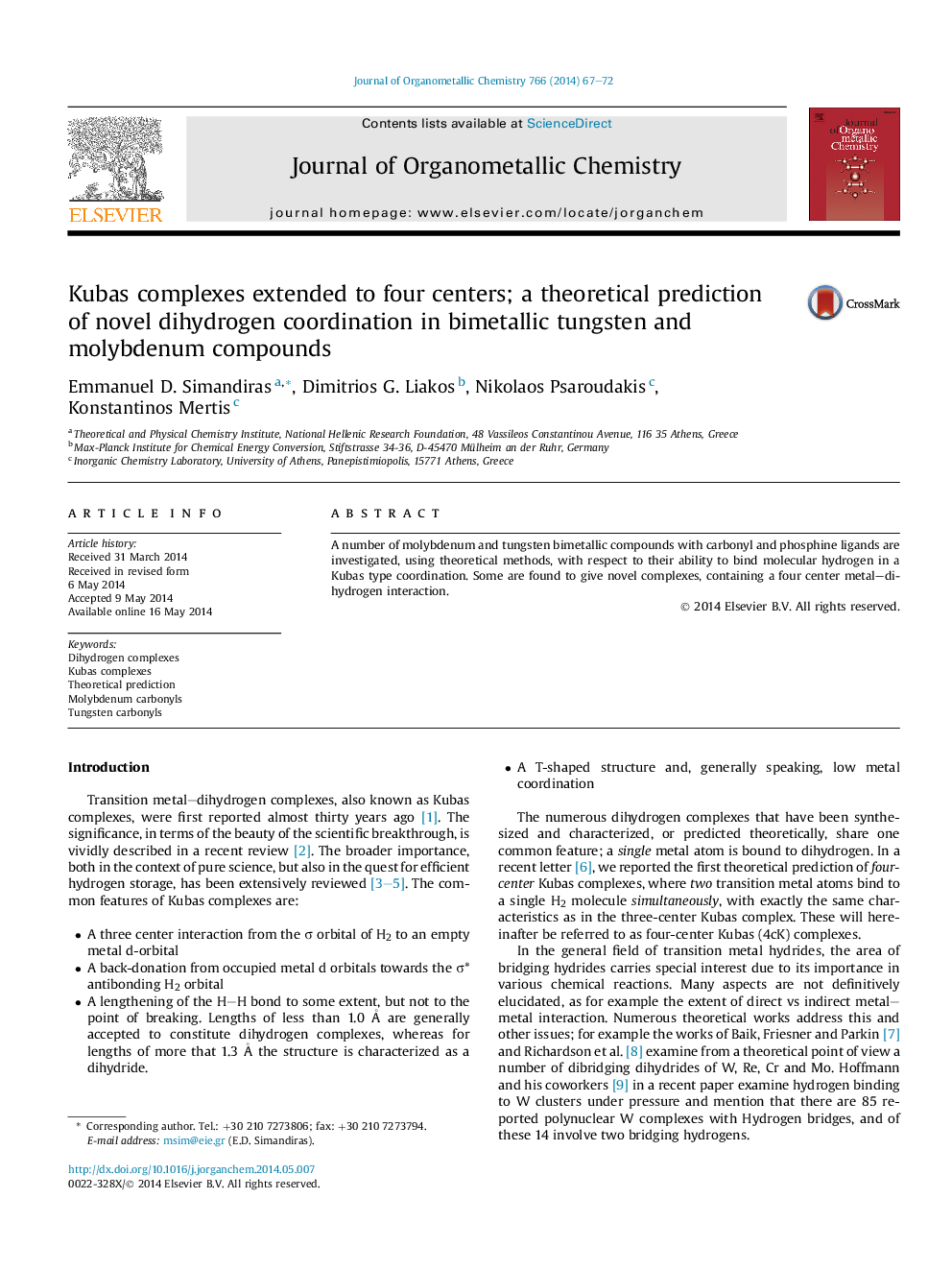| Article ID | Journal | Published Year | Pages | File Type |
|---|---|---|---|---|
| 1325467 | Journal of Organometallic Chemistry | 2014 | 6 Pages |
•Theoretical prediction of novel Kubas complexes.•Four center bonding on bimetallic transition metal compounds.•Molybdenum and tungsten carbonyls bind dihydrogen.•Up to three hydrogen molecules bound to two metal centers.
A number of molybdenum and tungsten bimetallic compounds with carbonyl and phosphine ligands are investigated, using theoretical methods, with respect to their ability to bind molecular hydrogen in a Kubas type coordination. Some are found to give novel complexes, containing a four center metal–dihydrogen interaction.
Graphical abstractA number of molybdenum and tungsten bimetallic compounds with carbonyl and phosphine ligands are investigated, using theoretical methods, with respect to their ability to bind molecular hydrogen in a Kubas type coordination. Some are found to give novel complexes, containing a four center metal–dihydrogen interaction.Figure optionsDownload full-size imageDownload as PowerPoint slide
